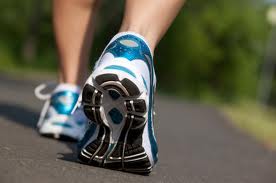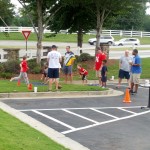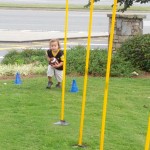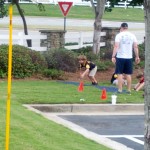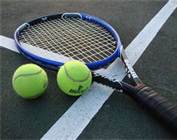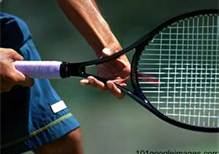Fitness Training
Eat This not That: Junk Food Substitutes
0So everyone knows that they have some sort of junk food that just gets them every time. In actuality most people eat way too much junk food daily instead of the occasional reward.
I will be completely honest with you and let you know that I have to work extremely hard to not have all the junk food that I want. This doesn’t mean that I don’t have any, just that I do all I can to limit the consumption.
But what do you do when you just cant beat the urge?
Well here is an answer.
In this guest video post from Mark MacDonald and Venice Nutrition Mark shares fun and real family-friendly strategies on how to eat your favorite junk foods and minimize the fat storing damage. Plus provides some healthy and tasty alternative for chips, candy bars and soda.
Click Have Your Cake and Eat it Too to enjoy the video from Mark on CNN HLN
Enjoy
Packing Your Fitness Suitcase
0By Julian A. Amedee, CSCS, Owner and Head Sports Performance Coach at Sports Fitness Experience
Part I: Things you like to do.
Trying to figure out what to do for your workout routine is one of the hardest things you may go through. Many people just go and lift weights. Others spend their times in group classes. While others step outside on the pavement and run for their routine. All of these are good examples of fitness programs, but is doing just that optimal for you? To get the most out of your fitness regimen you have to change things up. If you continue to do the same thing over and over the results you get will decrease exponentially. With so many different fitness options out there right now trying to determine what you should do can be a daunting task. Many pieces of equipment or classes really work on the same thing and if you decide on one, how can you know if it is the best choice. The strategy broken down in this series of articles will discuss a general way to set your regimen or pack your fitness suitcase
Building your general fitness regimen consists of three major components. Each component is designed differently based on how often you do it, how much time is spent on it and how much you enjoy doing it to name a few. The actual exercises or routines that you do for each component is unique to each individual, thus it is like packing your own suitcase. The three components are;
- Things you like to do
- Things you know are good for you
- A few things you hate to do
Today we are going to talk about the first component and probably the most important in your suitcase; Things you like to do. When I get asked about what to do when starting a workout program my first response back is the question “What do you like to do?” This is important because most people will not stick with anything that they do not like to do. If you do not enjoy your workout after that first surge of adrenaline is used up the excuses of why not to go will grow. Remember we all have reasons why we can’t work out each day. If you really don’t like what you are going to do, then it becomes much easier to stay away.
The things you like to do are the biggest pieces in your suitcase. It doesn’t mean that you will do them all the time, but when you do them you get a big dose of them. They are the things that fuel the rest of your program. They have to be exercises / routines / classes / activities that you cannot wait to do and when you do them you feel ready to take on the world. If you do not put these components into your suitcase first you will never know how to fit everything else in.
Part II: Things you know are good for you
So, we just talked about the first step in packing your fitness suitcase, things you like to do. Now let’s cover the second step; Things you know are good for you or things you need to do. These are the practices that everyone knows are good for them. They help build lean muscle. They burn excess fat and they improve your cardiovascular fitness level. They are undoubtable essential to anyone’s fitness routine. The problem here is that they are not necessarily the favorite things to do. They may not bring that level of euphoria that you desire when working out. Whatever the reason may be these exercises are not the ones that you can’t wait to do. This is why individually they are a smaller part of the suitcase, but overall there are more of them than anything else.
Remember no matter what, any fitness routine is about getting results. If you are not getting results or moving towards getting results in your program then you are just wasting your time. This doesn’t mean that the things you like to do are not good for you as well, but I guarantee that you will not love all the things that are good for you. For example, I know that a consistent conditioning program is important for my overall health. But since I stopped my competitive career I know that it is the toughest thing for me to do consistently. I do my best to get it in as much as I can, but I know that it is not my favorite and it takes some effort to get it done.
The things that you need to do are important for your overall health in one way or another. If you do just one or two things you will get you better at those one or two things, and that is it. Your overall health is dependent on many factors and needs variation to achieve its full potential. So to get faster results and be able to continue doing what you like to do you need to make the effort to add in those necessary components. These components will fill up a lot of empty space in your suitcase because there are many smaller pieces to put in. Once you get these in you are almost ready to go, but not just yet. You will still have a little bit of space left to make your packing complete.
Part III: Things you hate to do
The last part of your suitcase falls to the category of things you hate to do. These are exercises or routines that either don’t feel comfortable doing or don’t like how you feel afterwards. Many times the things you hate to do coincide with the things you need to do so don’t worry about the overlap. If you notice from the picture the things you hate count for a small amount of your space. If you do not like to do it, it cannot be your primary form of exercise or you will not do it. These are the things that you plug in here and there to give yourself a complete program.
On good strategy to get these components in is to add it into a day that you are doing something you like to do if possible. In this manner you will never have to dwell on getting through what you don’t like. Learning how and when to incorporate these components into your program, you will have learned how to designed a better training program. They are important enough that they need to be in your suitcase, but small enough to fit between other components so that everything fits nicely.
Get Started Today
0Once people find out that I am a trainer I get asked “What do I need to do to start working out”. My answer to them is always the same no matter who they are; “Just get started and start off easy”. The biggest issue that I see with this question is that people expect to go from doing nothing to doing a hardcore workout routine. If you go in with that mindset you are more likely to fail because either your mind or your body will sabotage you. In your mind you know that you cannot do it and you really do not want to go through the pain. So instead of starting you talk yourself into not doing anything. Then when you finally go in, you work out so hard that you cannot move for the next few days and don’t go back in. Either way you are not helping yourself to start a program.
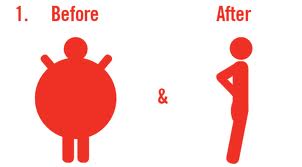
Weigh yourself before you get started so that you have a point A. That is the only way you will know if you are moving towards Point B (Your Goal)
As I said before you need to start off easy. That could mean just going out for a 10 minute walk everyday or doing a body weight routine at home for 10 – 20 minutes. Now even with this your body will be sore, but it will not be to a point where you cannot do anything else. With this lower intensity your body will get acclimated to the stress of working out gradually and allow for consistent work. During this time your body will produce endorphins that will make you start to crave the workouts and be able to add more intensity and time to what you are doing. After that you will look for ways to get your workout in and that’s when the real results start coming.
For some social proof of this starting easy principle just take a look at sports. All sports have a pre-season period before the actual games begin. This is the time that the players take to get used to the rigors of their sport. You will never see a season start off with the playoff or championship games. It takes some time to get to that point. So, to sum it all up, to get yourself working out consistently you need to start today and start off with something easy.
Whether you think you can or think you can’t. You are right
SFX running an obstacle course at Chick-Fil-A Roswell Corner’s Father son Football Night – 8/25/12
0Prepare Less, Play More: Tennis in Atlanta – The Solutions
0Last fitness post I talked about the 5 most common problems that I see with recreational tennis in Atlanta. Now let me clear something up for you. When I say recreational I mean not on the professional or even high amateur circuits. But this does not mean that the players are not out there playing for real. They are deep into tournaments and titles and awards all the same. Maybe that is the reason that they go through all of these problems in the first place. Who knows!!
I want to take the opportunity in this article to tell you my solutions to these problems. I know that most of the competitive athletes that read this will just ignore it, but I guarantee if you follow some if not all of these solutions you can end up playing better than you ever had.
- Playing too much
Solution: Just say NO
As I said last time, this may be the most difficult problem of the group to deal with. The actual solution is very simple, but the issues come from the action steps to complete it. Everyone believes that they owe it to neighbors, friends, family members and past teammates that they play when asked. But this is not the case. You owe it to your body (and family) to make smarter decisions when it comes to physical activities. You must plan out your year and the different leagues that you could possibly join so that you allow yourself more than one day off each week. Make sure that different leagues don’t overlap, especially if one is during playoff time. And lastly, give yourself a few weeks after seasons to just rest and get away from the game.
- Not having playing condition equipment
Solution: Check regularly and replace when necessary
This solution goes a lot deeper than just the aesthetics of the equipment. It is not if your shoes or racket (or court for that matter) look bad, it is about the playing condition. Shoes can look and be practically new and still have tread peeling back. Strings on rackets get loose with more usage and yes practice does count towards that usage. Take the time weekly to check your equipment for faults, inconsistencies and general wear and tear. Once you notice something take note of it and watch it from then on. Once it gets bad, replace it. Remember that with the amount of time you spend on the court the faster your equipment will wear down.
- Not properly warming up before matches
Solution: Dynamic warm-up
You cannot wait until lit is time for you to get on the court to start getting ready to play. I know it is “important” to hit the ball back and forth with your opponent before the match, but the real warm-up starts before that. A proper warm-up consists of (1) increasing the core temperature. If you are not sweating before a match, you are not ready. (2) Increasing blood flow to your muscles. If you still feel stiff when you start, you are not ready. (3) Increasing joint range of motion. If it hurts to take a full swing when you start playing, you are not ready. Get the strategic advantage over your opponent in the first set and be ready to play when you hit the court. To learn more about proper warm-up techniques contact me at Julian@sfxfitness.com and find out what sports performance training can do for you.
- Playing in adverse conditions
Solution: Don’t risk your health
This solution is more about common sense than it is about techniques. The big issue with this is that you need to cooperation of your opponents and other teammates. I know that each league has its own general rules when it comes to playing conditions and outside of that they leave it up to the competitors. But be aware and smart when the temperature gets too cold or too hot. Ask yourself is what you are doing worth the chance of frost bite or heat stroke. I know these are extremes, but sometime so are the conditions that you are getting out in to play. If you have to play take the necessary precautions to make sure that you cannot get hurt in the process.
- Not taking care of the body after playing
Solution: Mimic the pros
This is the simplest of the solutions, but again hard to actually apply. The biggest thing that you need to do is ICE. You have gone through a long match of swinging your racket, which uses your shoulders. This repetitive movement leads to something in the sports performance training world called overuse injuries. You don’t get hurt by doing any specific thing, but after a while you start to notice a nagging pain. Icing is the first line of defense against these types of injuries. Ice reduces the inflammation in the area that it is applied to. It allows the body to be as close to normal as possible before the start of the next set of matches. The tough part about icing is taking the time to get the ice set up and put on. Plus most ice packs are too hard and do not form around the area you need it to. (For information on making good ice packs go to Homemade “forming” ice pack). Once you start taking care of your body after you will see the results in your future matches.
Implementing some of not all of these simple solutions will both improve your tennis game and more importantly keep you a bit more injury free. Of course we all have the possibility of impact injuries. There is really nothing that you can do to prevent those. But allowing the body not to break down gradually will keep you in the game longer and may actually help you hold off any impact injuries. For more information about the sports performance training or general fitness training please visit www.sfxfitness.com and register for your free trial.
Prepare Less, Play More: Tennis in Atlanta – The Problems
0Prepare Less, Play More: Tennis in Atlanta – The Problems
This subject came to me as I was in a personal training session with a few of my clients that play tennis. It is unreal to me how much they actually play every week to begin with. But when you add in the lack of getting themselves ready to play, most tennis players are sports injuries waiting to happen. Being a former competitive athlete and fitness expert I cannot understand this concept of what I call not being prepared. In the Atlanta recreational tennis community it is rampant and routine. Here is a list of the 5 most common mistakes that make up this prepare less, play more mentality:
- Playing too much
This might be the biggest issue of them all when it comes to Atlanta tennis. These players simply play too often. Now the Atlanta has at least 3 competitive leagues (ALTA, T2, and USTA) and they each have various divisions including singles, doubles and mixed doubles. The thing is the leagues run into each other and allow very little “off-season” time, which when it comes to sports performance training is the worse. I have seen players that play matches 4 days out of the week, practice with their teams on 2 days and then have their personal lesson on their open day. Every so often I hear of people playing 2 matches in the same day or 3 straight days of matches. All of this repetitive motion is a big cause of overuse injuries like rotator cuff injuries and back problems.
- Not having playing condition equipment
This is a tricky issue and may be taken the wrong way. I am not saying that people are not playing with the right equipment. Trust me, most of these tennis players will have all of the latest and greatest tennis gear, rackets and accessories that they can buy. The problem comes when they do not have the time to check their shoes or rackets and make sure they are in good condition. With the amount of time they spend playing their shoes get worn out a lot quicker than normal and not making sure that they have the proper tread can lead to leg, foot and ankle injuries. The bad racket doesn’t lead to any injuries except maybe pride when they get whooped!
- Not properly warming up before matches
This problem is standard with all of the tennis community. Players get to the match, sit and wait for their game to start, get on the court and hit a few ball back and forth with the other team then start to play. At no point in time did they properly warm up their bodies. With all of the running and changing of directions that take place in a tennis match, to not go through a thorough movement prep program is insane. Without proper warm-up the body will be more prone to sports injuries such as muscle strains and joint sprains. Also, the quality of play at the start of the match will be compromised because they spend it trying to get loose.
- Playing in adverse conditions
The weather in Atlanta is a big issue across the board. It is either too hot, on occasion too cold and we have one of the worse pollen rates in the country. All these factors affect the conditions of all outdoor activities. I have seen and heard of many players that will play 3-4 hours of tennis in bad conditions just because the team “needs the points”. Now I am not saying that they need to blow the team off just because the weather is bad, but there does need to be some precaution taken in these instances.
- Not taking care of the body after playing
This may be the easiest problem to take care of and would probably lead to less overall injuries, but it is the most widely problems to date. Most tennis players go through all the issues that I talked about previously then go home and don’t do anything for their bodies. This is the most important time for recovery from putting their bodies through the rigors and stress of their matches. This is the time that the body needs to get ready for the next day and playing again. Not taking care of issues that occur, both known and unknown can lead to major overuse injuries like tennis elbow and tendinitis.
One of the things that I tell all of my clients is that even though they watch and try to be like the professional tennis players, they do nothing like them. They play way more than professionals and take less time off to recover or to just train. Watching a match we just see the players come out to the court and hit the ball, but what we don’t see is the hours of preparation that they do pre match. You will never see a player come out of the locker room stiff and not sweating, because they spend time getting their bodies ready to perform before they step on the court. Lastly, if you watch post interviews you will see just about every player with an ice pack on their shoulder or elbow. This is to make sure that they cool down any inflammations that build up during their match. In short you need to prepare more and play better. Part II – Prepare less, play more: Tennis in Atlanta – The solutions

